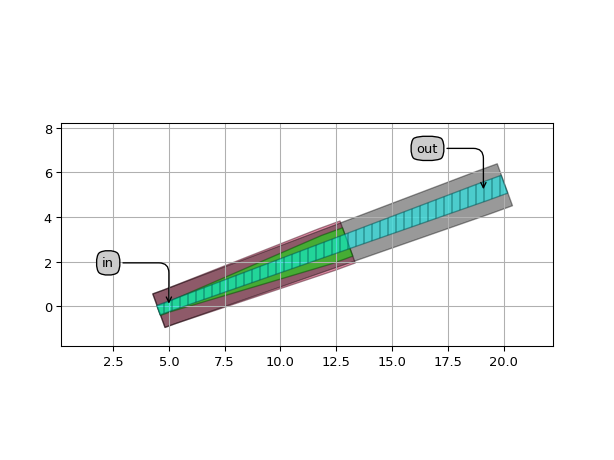WireSocketWaveguideTransitionFromPortLinear
- class picazzo3.traces.socket_wg.WireSocketWaveguideTransitionFromPortLinear
Linear Transition between Wire and Socket Waveguides.
- Parameters:
- wire_only_wg_template: PCell and _TraceTemplate
- modified_start_wg_template: PCell and _TraceTemplate
Modified start waveguide template (using the end_trace_template, but with the dimensions of the start_trace_template)
- start_port: _PortInterface
the port on which to extract trace template, position and angle
- end_trace_template: PCell and _TraceTemplate and WireWaveguideTemplate, SocketWaveguideTemplate
- start_trace_template: PCell and _TraceTemplate and WireWaveguideTemplate, SocketWaveguideTemplate
- name: String that contains only ISO/IEC 8859-1 (extended ASCII py3) or pure ASCII (py2) characters
The unique name of the pcell
- Other Parameters:
- reverse_templates: locked
When True, treat start_trace_template as end_trace_template and vice versa. To use the correct templates, use the _{start/stop}_trace_template properties. This should not be set manually, but calculated by the transition itself.
Views
- class Layout
- Parameters:
- wire_only_length: ( float and int, float, integer, floating and number >= 0 ), *None allowed*
Length of transition where shallow part is built up.
- wire_only_cladding_width: float and number > 0
width of the cladding at the end of the wire_only_length
- wire_end_width: float and int, float, integer, floating and number >= 0
width of the wire core at its end point.
- straight_extension: Coord2 and number >= 0
tuple: straight extension at start and end of transition
- length: float and int, float, integer, floating and number >= 0
length of the transition
- end_position: Coord2
end position of the transition
- start_position: Coord2
start position of the transition
- view_name: String that contains only alphanumeric characters from the ASCII set or contains _$. ASCII set is extended on PY3.
The name of the view
Examples
"""This example shows how to append a transition onto a component. We define a PCell with a port on the Layout level (position + angle). Then we use WireWaveguideTransitionFromPortLinear to connect this port to a transition that creates a transition to a wire waveguide. """ import si_fab.all as pdk # noqa: F401 from ipkiss3 import all as i3 from picazzo3.traces.wire_wg import WireWaveguideTemplate from picazzo3.traces.socket_wg import SocketWaveguideTemplate, WireSocketWaveguideTransitionFromPortLinear wg_start = WireWaveguideTemplate() wg_start.Layout(core_width=0.45, cladding_width=1.6) wg_end = SocketWaveguideTemplate() wg_end.Layout(core_width=0.85, cladding_width=2.0) p = i3.OpticalPort(name="out", position=(5.0, 0.0), angle=20.0, trace_template=wg_start) t = WireSocketWaveguideTransitionFromPortLinear(start_port=p, end_trace_template=wg_end) t_lay = t.Layout(length=15.0, straight_extension=(0.5, 1.0)) t_lay.visualize(annotate=True)
